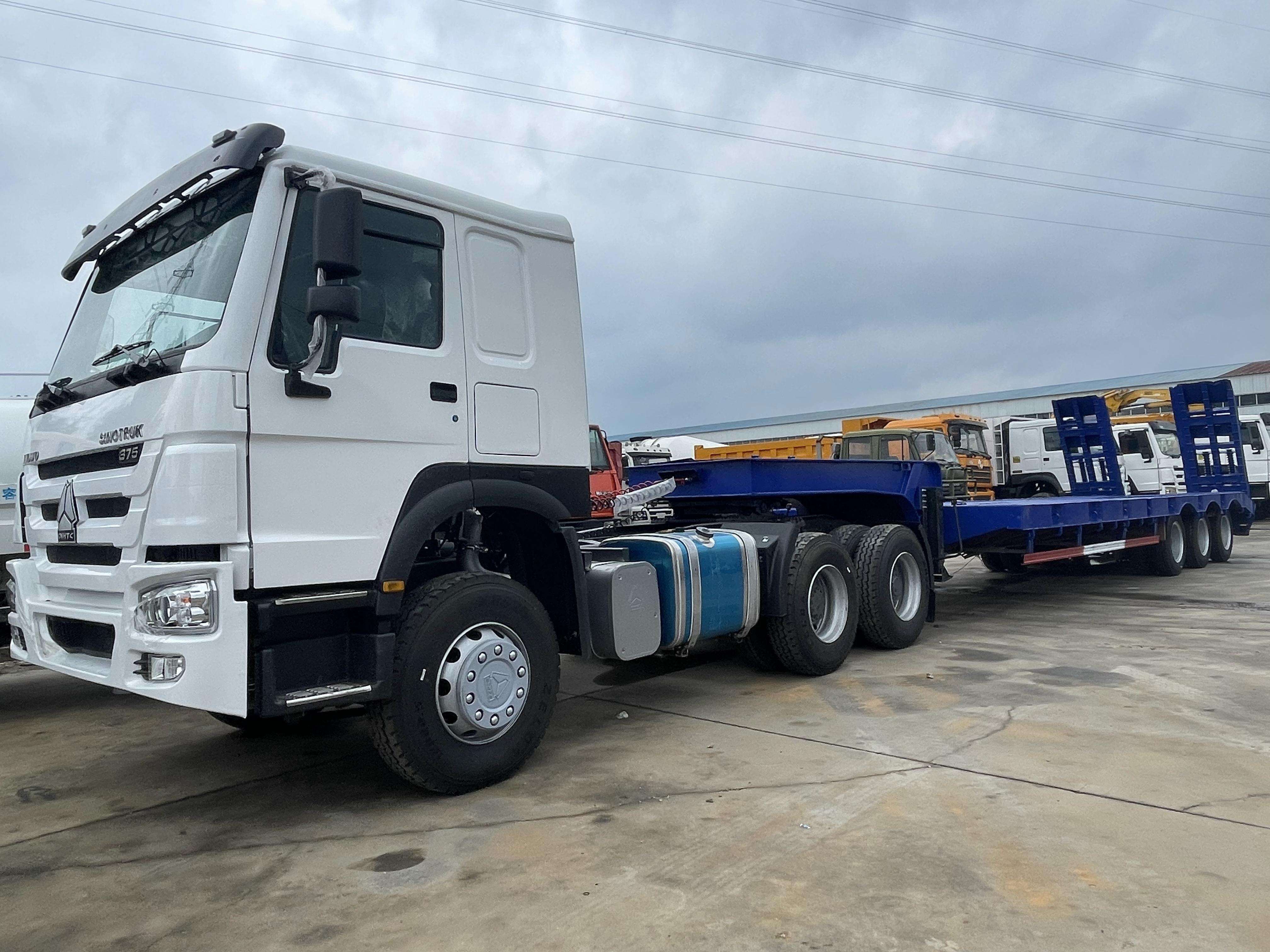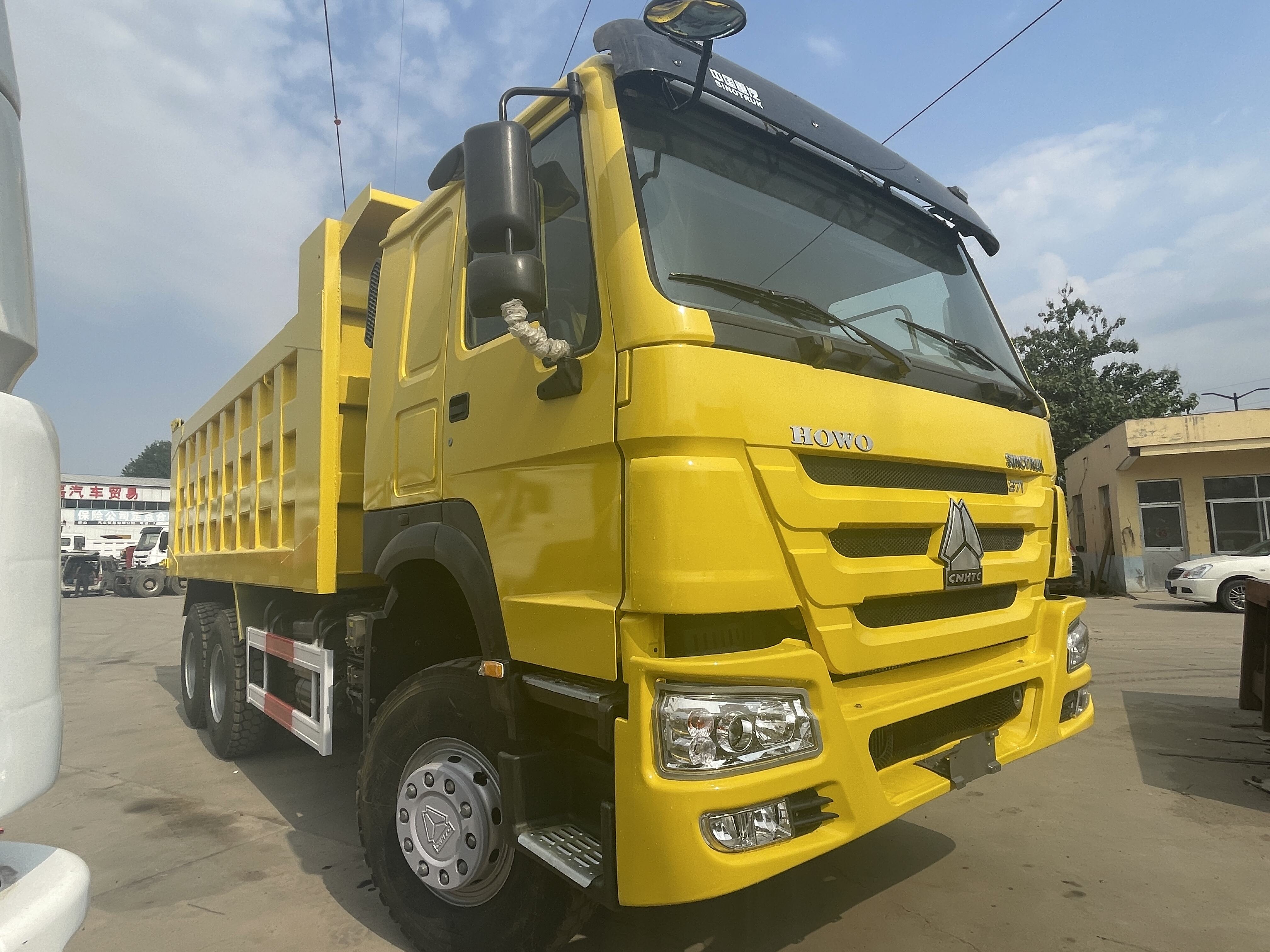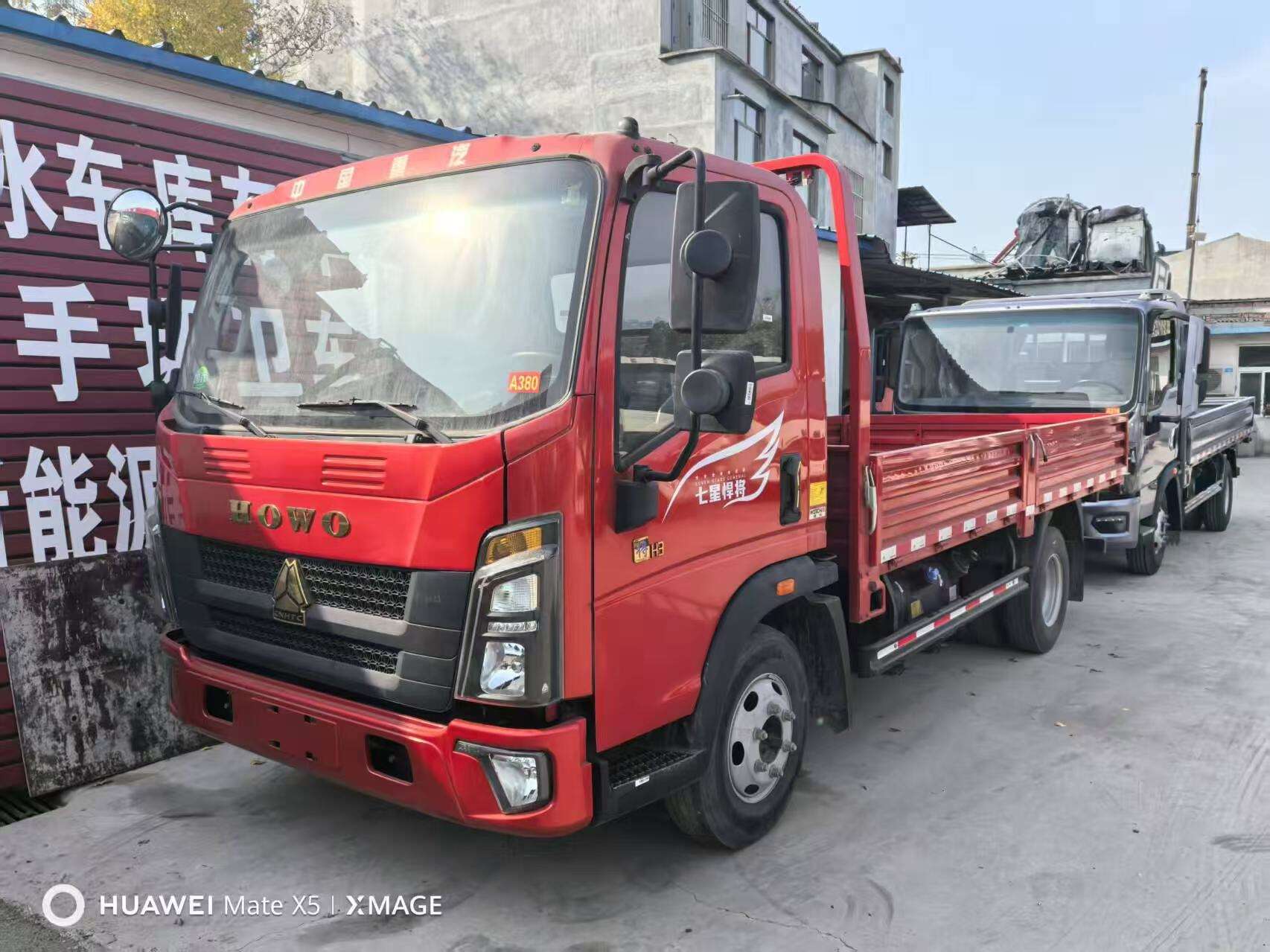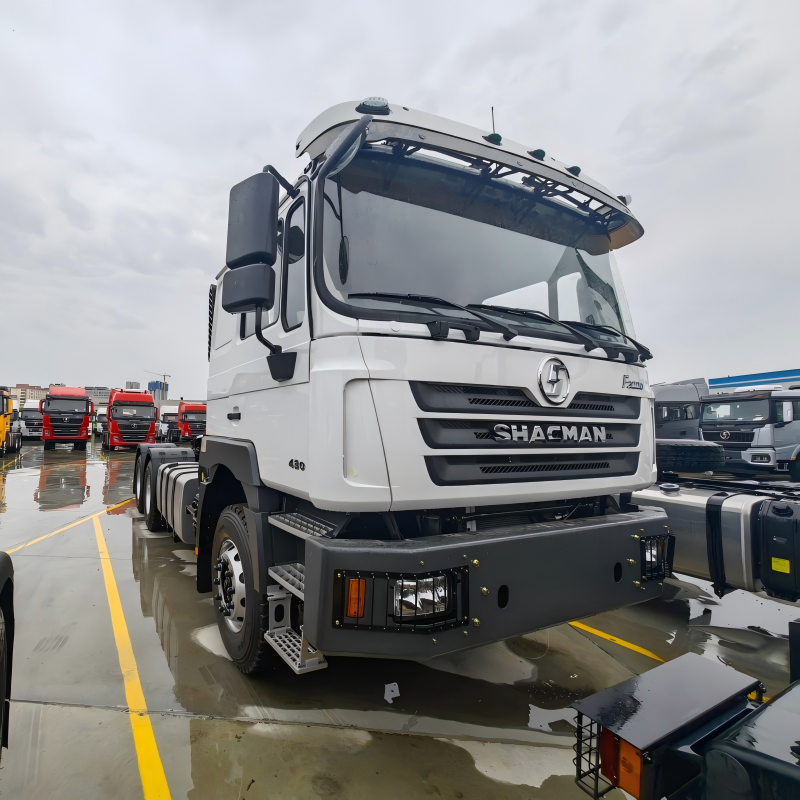What Is a Lowbed Trailer? Design, Function, and Key Advantages
Understanding the lowbed trailer design and features
Lowbed trailers, sometimes called lowboys or double drop units, have this special two level deck setup. There's a drop section right after the goose neck part, then another one just before reaching the wheels. What this does is bring down the main platform to around 18 to 24 inches off the ground. That's way lower than regular flatbed trucks. So when companies need to move really big machines like construction equipment, they can do it without running afoul of road height restrictions. The basic build includes strong steel frames, multiple axle setups usually somewhere between four and nine axles total, plus suspension systems built to handle serious weight loads. These rigs can carry anywhere from 80 thousand up to 120 thousand pounds worth of cargo, making them perfect for hauling bulldozers, excavators, and all sorts of oversized gear that wouldn't fit on normal transport vehicles.
The significance of a low center of gravity and stability in trailers
A lower deck height means the center of gravity sits much closer to the ground, which cuts down on trailer sway quite a bit actually around 40% less than standard flatbed trucks. This kind of stability really matters when moving those awkward loads that tend to tip over easily things like construction cranes or big industrial generators. The risk of flipping over gets dramatically reduced when going around corners or driving over rough roads. Some research out there shows these kinds of designs can cut accidents down by roughly 22% in situations where massive equipment needs transportation. Plus, hydraulic suspension systems let drivers adjust the deck height as needed, so they can get better balance and make loading all sorts of gear onto the truck much easier in practice.
Key differences between flatbed vs. lowboy load capacity
Flatbed trailers generally ride around 5 feet off the ground and can haul loads weighing up to 48,000 lbs, but they come with a strict 14 foot height restriction. Lowbed trailers take a different approach altogether by focusing on how high stuff can be loaded rather than how close the trailer stays to pavement. These lowboys handle equipment that stands nearly 12 feet tall without running afoul of traffic laws, something regular flatbeds struggle with since they'd need those costly special permits for taller cargo. Take an excavator that's 10 feet from bucket to cab - trying to load this beast onto a standard flatbed usually means getting stuck in red tape because most states won't allow such heights. But slap it on a lowbed and suddenly there's room to spare plus about 30 percent more weight capacity too. Of course, these trailers sit so low to the ground that drivers need custom ramps just to get heavy machinery on board, not to mention mapping out routes ahead of time to avoid speed bumps and low bridges that could cause problems down the road.
Types of Lowbed Trailers: Fixed, Removable, and Stretch Models
Fixed Gooseneck Lowbed Trailers: Durability and Structural Integrity
Fixed gooseneck trailers come with a solid, one piece weld construction that makes them much stronger and gets rid of those annoying pivot points we see on other models. This kind of build works great when doing the same heavy lifting over and over again. These rigs can handle some seriously heavy stuff too sometimes pushing past the 50 ton mark easily enough to carry around things like big bulldozers or massive industrial power generators. The back end has these handy drop ramps that make getting equipment on board a lot easier, and the whole frame is built tough enough to last through years of constant work without breaking down.
Removable Gooseneck (RGN) Trailers and Their Flexibility in Heavy Equipment Transport
RGN trailers feature a front section called a gooseneck that hydraulic systems can lower, cutting down the deck height around 12 inches. The flexibility makes it possible to load tall items such as wind turbine blades or drilling rigs from the front side without running afoul of overhead clearance restrictions. According to industry numbers, about 62 percent of all heavy equipment transports needing vertical clearance modifications rely on RGN models. These trailers have become essential for handling complicated shipping jobs where standard equipment just won't cut it.
Stretch Lowboy Trailers for Oversized Load Transportation
Stretch lowboys feature adjustable deck lengths ranging from 35 to 80 feet, making them essential for transporting elongated or irregularly shaped cargo such as bridge sections, modular buildings, and large industrial components. Some models include sliding axles that dynamically redistribute weight, ensuring compliance with per-axle weight laws across different jurisdictions.
Axle Configurations and Weight Capacity Variations Across Types
| Axle Type | Typical Weight Capacity | Common Applications |
|---|---|---|
| Single (4-Wheel) | 20–30 tons | Compact construction equipment |
| Tandem (8-Wheel) | 40–60 tons | Mid-sized excavators, transformers |
| Triple (12-Wheel) | 70–100 tons | Mining drills, industrial boilers |
Multi-axle setups improve weight distribution and reduce road impact, while self-steering axles enhance maneuverability in tight spaces. Operators must align trailer specifications with federal bridge laws and state regulations to maintain compliance and avoid penalties.
Applications Across Industries: How Lowbed Trailers Serve Construction, Mining, and Heavy Hauling
Uses and Applications of Lowboy Trailers in Construction and Heavy Hauling
In construction and heavy haul operations, lowbed trailers make all the difference when it comes to moving big equipment safely across sites. These specialized trailers handle massive gear such as excavators, cranes, and those bulky bulldozers that just won't fit on regular trucks. What really sets them apart is their super low design which helps avoid hitting bridges or getting tangled under power lines something regular flatbeds struggle with constantly. Take a standard lowboy for instance it typically handles machinery around 12 feet high, while most standard flatbeds max out at about 8.5 feet. This extra clearance space saves time and headaches on job sites where every inch matters.
Industries Using Lowbed Trailers: Construction, Mining, Agriculture, and Industrial Sectors
Lowbed trailers support a wide range of industries reliant on heavy machinery movement:
- Construction: Transporting pavers, backhoes, and tower crane segments.
- Mining: Relocating 50-ton drilling rigs and hydraulic shovels.
- Agriculture: Moving large harvesters and irrigation systems.
- Industrial: Delivering transformers, turbines, and boilers requiring precise weight management.
Common Types of Machinery Transported: Excavators, Cranes, Bulldozers, and Generators
These trailers are engineered to handle extreme loads, such as a 40-ton excavator with a 15-foot tread base or a 200-kW generator spanning 22 feet. Reinforced decks and multi-axle configurations ensure even load distribution and structural integrity during transit.
Case Study: Transporting a 60-Ton Excavator Across State Lines
A construction company based somewhere in the heartland pulled off an impressive feat last year when they transported their massive 60-ton excavator all the way from Illinois across the mountains into Colorado. They used what's called a 9-axle stretch lowboy trailer for this job. The RGN (Removable Gooseneck) setup made loading from the front much easier, which is pretty important when dealing with such heavy machinery. Plus, the adjustable deck came in handy because nobody wants to deal with uneven weight distribution causing problems during transport. Getting permits was another major hurdle since each state has different rules about maximum widths and weights allowed on roads. Their permitting team worked closely with local authorities throughout the journey to avoid any unexpected roadblocks or costly delays. Looking back, this whole operation shows just how critical proper equipment selection, careful route planning, and understanding transportation regulations really are when moving big stuff long distances.
Advantages of Lowbed Trailers in Heavy-Duty Transport
Superior Stability Due to Low Center of Gravity and Lowbed Trailer Design
When cargo sits closer to the earth on lowbed trailers, there's simply less side-to-side shifting happening. This makes all the difference when transporting those heavy items with high centers of gravity such as cranes or big industrial generators. The lower center point cuts down dramatically on the chance something might tip over during transport. And we're talking real money at stake here too. A single accident can rack up repair bills well past quarter of a million dollars. Better weight distribution means these rigs handle much better across uneven ground conditions found regularly in places where mining operations run or construction sites are active. Think about how many times workers have had to navigate around bumpy roads while moving massive machinery between locations.
Versatility in Hauling Oversized and Heavy Equipment
Lowbeds excel at transporting non-standard cargo, including 40-ton excavators and wind turbine blades. Removable gooseneck (RGN) models allow self-propelled machinery to drive directly onto the deck, eliminating the need for cranes or winches. This capability cuts setup time by 15–40% compared to flatbed alternatives, increasing operational efficiency.
Durability Under Extreme Conditions and Long-Term Cost Efficiency
Lowbed trailers are built tough with high strength steel and materials that resist corrosion, so they can handle pretty much anything thrown at them. We're talking about everything from the salty air along coastlines to the dusty conditions of desert mines. Sure, these trailers cost around 20 percent more upfront compared to regular models, but according to the Heavy Equipment Maintenance Journal, they typically last between 10 to 15 years. That means less money spent on replacements and repairs down the road. Real world feedback shows operators experiencing about 30% fewer stoppages caused by structural issues over time. Makes sense when considering how much wear and tear these machines actually endure day after day.
Compliance with Road and Height Regulations for Legal Freight Transport
With deck heights under 48 inches, lowbed trailers avoid oversize load permits for most equipment, bypassing 85% of permit requirements associated with flatbeds. Adjustable axle configurations help meet federal bridge law formulas and state weight limits, reducing permit costs by up to $1,200 per trip and minimizing route restrictions.
Challenges and Best Practices in Lowbed Trailer Operations
Disadvantages of Lowboy Trailers: High Acquisition and Maintenance Costs
Despite their performance advantages, lowbed trailers come with higher operational costs. New units often exceed $150,000, and annual maintenance can reach $15,000 due to complex hydraulic systems and structural stress. Regular inspections of axles, goosenecks, and deck welds are essential to prevent costly breakdowns and extend service life.
Freight Limitations Due to Legal Weight and Dimension Regulations
Federal bridge laws and state-specific restrictions cap cargo height at 8.5–12 feet and width at 14 feet without permits. Loads exceeding these dimensions require escort vehicles and approved routes, adding 15–25% to project timelines. Careful pre-trip planning is critical to avoid delays and compliance issues.
Skill Requirements for Safe Loading and Unloading Heavy Machinery
Proper operation demands specialized training, as 72% of heavy-haul accidents stem from incorrect center-of-gravity calculations (Industrial Safety Report 2023). Certification programs such as NCCCO’s Rigging Fundamentals equip operators with essential skills, including:
- Calculating load-bearing capacity per axle group
- Identifying trailer deck stress points
- Interpreting load securement charts
Safe Methods for Loading and Unloading Heavy Machinery on Lowbed Trailers
A structured three-phase approach ensures safety and efficiency:
- Preparation: Confirm trailer capacity using manufacturer load tables.
- Loading: Use ramps with no more than a 15° incline and employ a spotter for guidance.
- Securement: Apply 4-point chain tie-downs with tensioners rated for 50% above the cargo’s weight.
Securing Oversized Loads and Compliance With Safety Standards
The 2024 Heavy Equipment Transport Safety Report notes that 89% of DOT violations involve improper load balancing. To remain compliant, operators must:
- Display WIDE LOAD signage visible from 500 feet
- Apply reflective tape to protruding parts
- Observe night transport restrictions for loads wider than 12 feet
Trend Analysis: Automation and Remote Monitoring in Lowbed Hauling
Telematics adoption is transforming heavy-haul operations, with 42% of fleets now using IoT sensors to monitor key metrics:
| Metric | Monitoring Benefit |
|---|---|
| Real-time axle weight | Prevents overloading fines |
| Hydraulic pressure | Alerts for impending system failures |
| GPS route adherence | Ensures permit compliance |
This technology improves safety and reduces insurance premiums by 18% through better risk management and operational transparency (Logistics Tech Journal 2024).
FAQ Section
What is the main advantage of a lowbed trailer?
Lowbed trailers offer a lower deck height, which allows for a lower center of gravity and better stability, reducing the risk of tipping over when transporting large and heavy equipment.
How do lowbed trailers comply with height restrictions?
Lowbed trailers are designed with a deck height under 48 inches, allowing them to transport tall equipment without exceeding legal height restrictions, unlike standard flatbeds that require permits for taller cargo.
What are the disadvantages of using lowbed trailers?
While lowbed trailers offer great performance advantages, they come with higher acquisition and maintenance costs, often exceeding $150,000 for new units, plus $15,000 annually for maintenance due to complex systems.
How do stretch lowboy trailers handle oversized loads?
Stretch lowboy trailers feature adjustable deck lengths and sliding axles to redistribute weight dynamically, ensuring compliance with weight regulations across jurisdictions, making them suitable for long or irregularly shaped cargo.
What industries benefit from using lowbed trailers?
Industries like construction, mining, agriculture, and industrial sectors benefit from lowbed trailers for transporting heavy machinery, including excavators, drilling rigs, large harvesters, and transformers.








